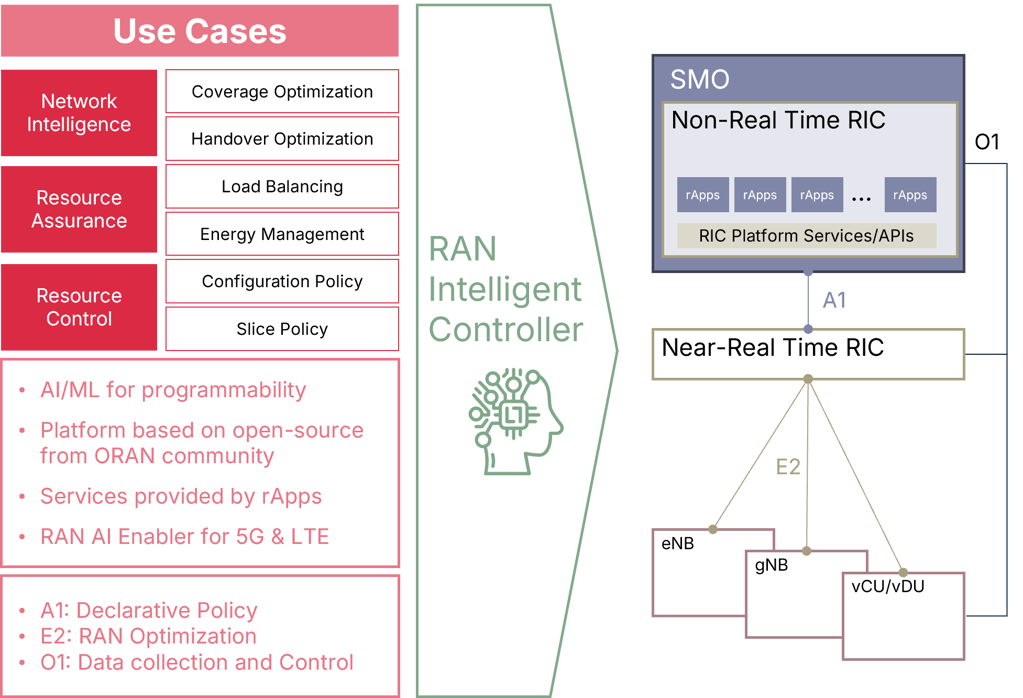
A non real-time RAN Intelligent Controller (non-RT RIC) is a crucial element within the Open Radio Access Network (O-RAN) framework, designed to elevate the management and optimization of the RAN. Unlike its near real-time counterpart, the non-RT RIC operates on a timescale of seconds or minutes, which makes it more suited for strategic, long-term network management activities rather than immediate, real-time decisions. It enhances the traditional Self-Organizing Network (SON) capabilities by leveraging advanced analytics, machine learning, and policy-driven frameworks to offer centralized control and optimize various network functions, such as resource allocation, interference management, and load balancing. This augmentation supports ORAN and traditional RAN and facilitates a more adaptive and resilient network capable of dynamically responding to shifting network conditions and user demands.
rApps, or RAN applications, are the backbone of the non-RT RIC, playing a crucial role in its intelligence and operational functionality. These applications are tailored to perform specific tasks and deliver specialized management capabilities for the RAN, similar to but more advanced than traditional SON features. Examples of rApps include traffic steering, energy efficiency, and predictive maintenance. Using AI and machine learning algorithms, rApps can continuously analyze vast amounts of operational and service data to make informed decisions, predict potential network issues, and optimize network performance. The modular design of rApps allows operators to deploy and update these applications independently, providing an evolutionary path for traditional RAN technologies to modernize incrementally without requiring structural overhauls.
Integrating non-RT RIC and rApps is not just a technical process but a strategic move toward fostering an AI-driven RAN. This integration bridges the gap between traditional SON functionalities and advanced, intelligent network operations. Through continuous monitoring and analytics, the non-RT RIC can discern patterns and trends that human operators might miss, even in a traditional RAN setup. rApps can then leverage these insights to optimize the network, such as mitigating interference or reallocating resources to match user demand shifts. This AI-driven methodology not only enhances the efficiency and performance of the RAN but also enables it to become more proactive and self-healing. Consequently, it reduces the need for manual intervention, supporting a more robust and reliable mobile network for end users while providing a clear evolutionary path for transitioning from traditional RAN to advanced AI-driven RAN capabilities.
